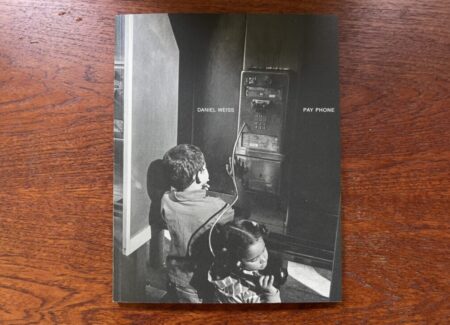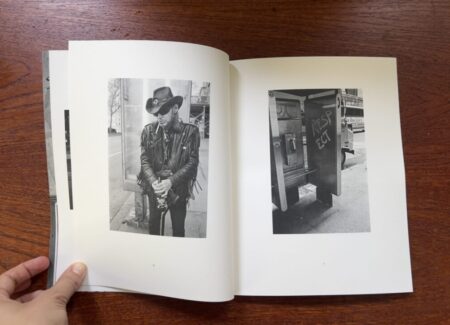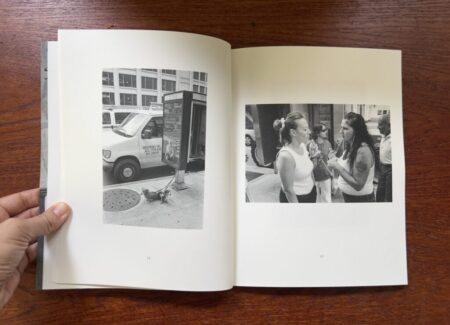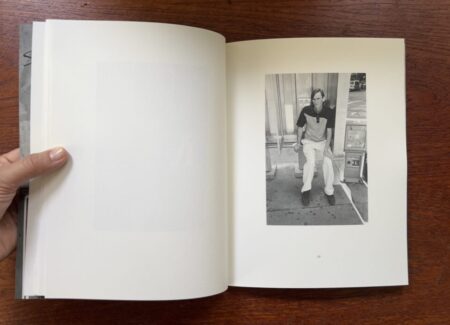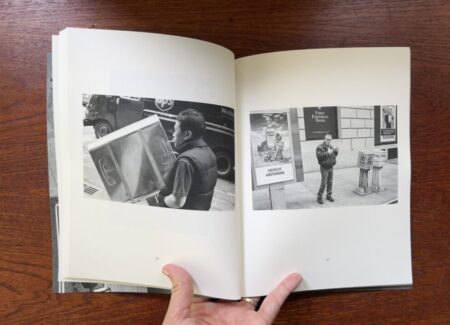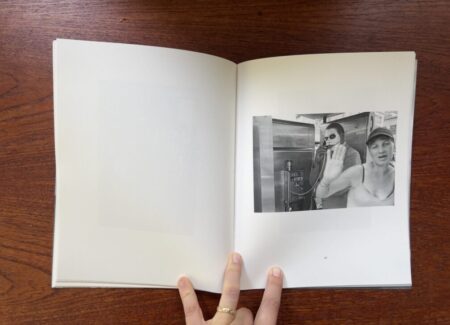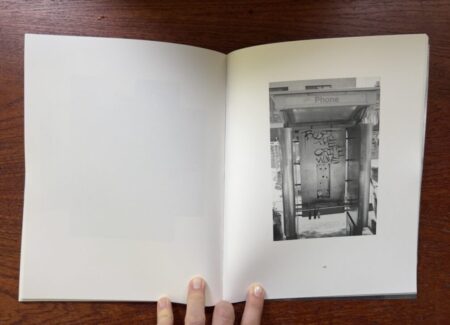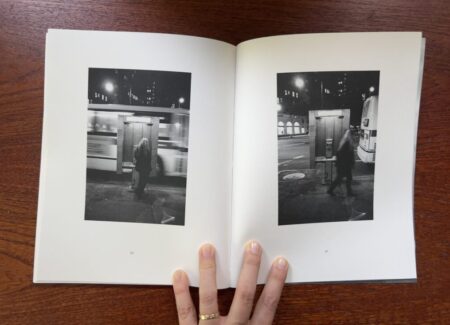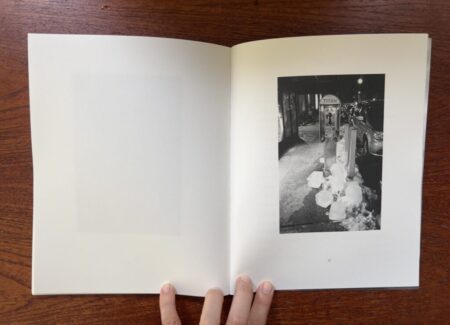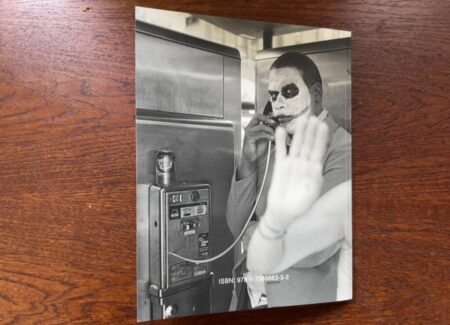JTF (just the facts): Published in 2024 by Smog Press (here). Perfect bound softcover, 9.75 x 7.75 inches, 60 pages, with 37 black and white images. (Cover and page spreads below.)
Also available in a special edition. This version includes a book and comes with a silver gelatin print (30 x 40 cm), printed and signed by the artist. In an edition of 15+2AP.
Comments/Context: Thinking about the bygone payphone booths of the 1990s and 2000s fills me with wistful affection for a different world. One that is slower, less connected, and at a glance, less complicated. The payphone’s shelf life was a little more than a century, something like 1898 to 2022. It was an equalizer: a mode of communication that was accessible to people everywhere. And while payphones were ubiquitous in New York City for much of the 20th century, the last public street payphone was removed in 2022.
In his recent photobook Pay Phone, street photographer and native New Yorker Daniel Weiss takes his viewer back to ponder the last years of the payphone in the city. This book is a narrow slice of street photography, using payphones as the organizing theme, serendipity of moments, people. In a selection of 37 photographs made between 2008 and 2020, Weiss pieces together a view of the range of people, cultures, and uses of New York City street payphones. The photographs are made in a reportage style, in black and white, using a 35mm camera. The payphone serves as a physical gathering place, a place for graffiti, a place to tie a dog, a place to sit, or shield oneself from the rain. When I saw the book’s cover image I was thrown for a loop – it was my own nostalgia for a slower time, and the fabulous photograph that advertised the photobook’s content that excited me.
The cover of Pay Phone depicts two children playing inside a payphone booth at the corner of West 4th & 7th Avenues in Manhattan. The image feels timeless – very little about the fashions or the technology specifically describes the decade. The younger of the two, a girl in pigtails in the foreground, holds the phone upside down, her ear to the speaking end and her mouth to the listening end. The metal coil of the phone’s cord has an intense and beautiful highlight that spirals up the center of the frame, and finally disappears into the rectangular box of the phone’s core mechanism. To the left of the girl playing her game is the second child who looks to be pondering the phone’s viscera while he drums on the telephone’s rectangular form, keeping the beat of midtown Manhattan as only a child might perceive. The cover image is printed full bleed, from spine to fore-edge. It is playful, evocative, curious.
The first left facing page of the book opens with a horizontal frontispiece next to the title page. This photograph of two phone booths, side-by-side at night. The booths are vacant and the atmosphere is ominous. It feels like striking a minor chord just left of middle C on the piano. After the title page the cover image is repeated, only this time it is shown in the full grace of its 2:3 vertical format. From there the book quickly establishes its design strategy. It is classic layout with every image put on the page in the same place at the same scale from the beginning through the end of the book. Page numbers are established at the bottom center of each page, another elegant choice.
As one moves through the book, a musical rhythm is quickly established within the first dozen pages. We are invited in to contemplate a New York City of the recent past, a place before smartphones and earbuds monopolized all attention. Weiss doesn’t use the structure of the payphone booth as a formal compositional element much; he is more interested in the frenetic city scenes that existed in and around the payphone booth. People who find themselves in the vicinity of a payphone’s purview, either in front, beside, or walking by, are each captured as part of this New York City time capsule.
A variety of people engage with Weiss’s lens throughout the book. There is a portrait of a middle-aged white man in a cowboy hat smoking a cigarette and drinking a Stewart’s soda from a glass bottle. On another page, two adolescents stand in front of two side by side phones looking at us with blank gazes. A black man whose face is painted as the Joker from the Batman stories is using yet another payphone, while a woman with face tattoos interrupts in the foreground, looking to be yelling out. One could imagine that people standing near the payphone’s bay offered the photographer an opportunity to make a portrait while the subject had their guard down. Balancing out the portraits are a variety of atmospheric photographs that are absent of people. In some of these images, like one with a reproduction of the Mona Lisa seen reflected through the window of a Jeep Wrangler, it is unclear where the phone booth symbol actually exists. It’s an engaging image, yet in this moment, it becomes a bit of a riddle to find the clues to the payphone. The subject matter of the book never veers too far from its title. A single subject photobook like this one is easy to understand and just as easy to like.
Ultimately, the rhythm of the street is felt by way of the sequence of the book’s images, structured at a pace that is resonant of the speed of power walking through the streets to get to a meeting or catch a train. Much of the photobook’s power lies in the space between the photographs. Those spaces allow the viewer to remember the recent past and the life that simpler technologies afforded.
I appreciate that this book does not assign a value to the end of the payphone. Each reader will ascribe meaning and memory to the past after viewing this trip into the past. The book caused me to recall myself as a young person, traveling on the commuter train from the lower Hudson Valley into Penn Station. No matter what time of day, I would find a payphone near Union Square in order to make the requisite call home to let my dad know that I was still alive.
In addition to showcasing some stellar photographs made by the photographer, the book takes its reader back in time in a unique and unusual way. I think many of us are eager for a nostalgic journey, and this one is a joy.
Collector’s POV: Daniel Weiss does not appear to have consistent gallery representation at this time. Collectors interested in following up should likely connect directly with the artist via his website (linked in the sidebar).
